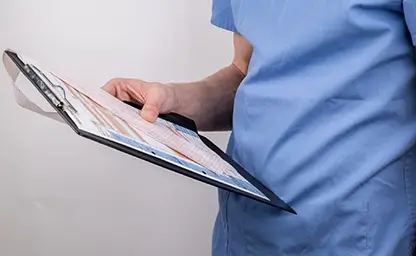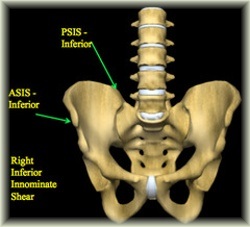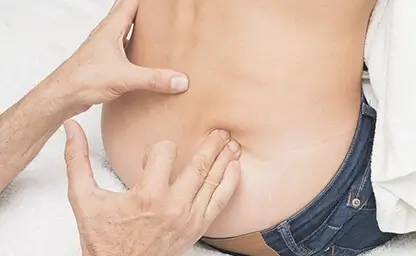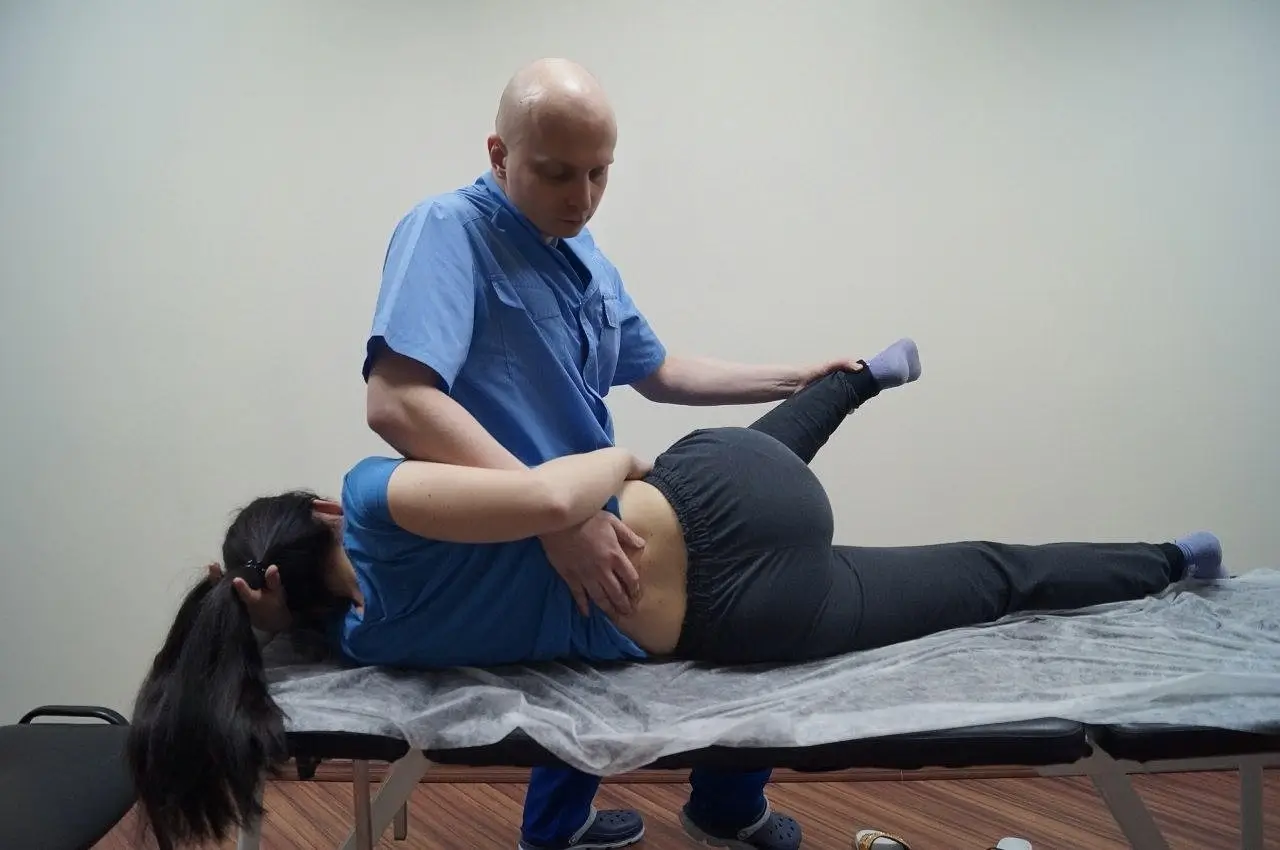

Right side lower back pain when bending over
Male 50 years old. Complains of discomfort and lower back pain in right side on movements (bending over forward and to the sides), localized in the lower right lumbar region (sacroiliac joint area). The problem occurred after a serious fall from a bruise 3 years ago. Since then he have periodically the pain as a result of awkward movements. He have been to several bone surgeons, but the pain was relieved only with one "old woman". Standard manipulations performed by two orthopedic chiropractors had no effect on symptoms, but were very uncomfortable because of their rudeness (fast manipulations, twisting, shaking).
 Objective examination: Flexion test (standing, sitting) is positive and reproduce the pain when bending forward, stork test brightly positive on right, posterior and anterior superior iliac spine, sciatic tuberosities lower on right, base of sacrum deeper on right, sacroiliac dysfunction rotation to the left field oblique axis (based on flexion and extensio tests), right leg longer than left leg, fifth lumbar vertebrae rotated to the left along with sacrum, nerve tension symptoms negative, sciatic nerve points not painful, FABRE test (hip joint) moderately positive right - limitation stiff, articular).
Objective examination: Flexion test (standing, sitting) is positive and reproduce the pain when bending forward, stork test brightly positive on right, posterior and anterior superior iliac spine, sciatic tuberosities lower on right, base of sacrum deeper on right, sacroiliac dysfunction rotation to the left field oblique axis (based on flexion and extensio tests), right leg longer than left leg, fifth lumbar vertebrae rotated to the left along with sacrum, nerve tension symptoms negative, sciatic nerve points not painful, FABRE test (hip joint) moderately positive right - limitation stiff, articular).
Diagnosis: Functional blockage of the IS joint, downward shift of the right pelvis (iliac-sacral dysfunction), left rotation of the sacrum along the left oblique axis (sacroiliac dysfunction), upper-posterior position of the right pubic bone (pubic articulation dysfunction).
 Treatment: muscular-energetic techniques for pubic joint dysfunction, iliac sacroiliac dysfunction (infirior shear) using breathing synergy, myofascial release of sacral ligaments (indirect method).
Treatment: muscular-energetic techniques for pubic joint dysfunction, iliac sacroiliac dysfunction (infirior shear) using breathing synergy, myofascial release of sacral ligaments (indirect method).
Results: after one session disappearance of pain when bending over, significant decrease of discomfort. On examination: bony landmarks of the pelvis are at the same level, legs are of equal length, flexion test is negative.
Lower back pain right side when bending forward. Conclusions.
Description of a rather rare dysfunction, the inferior dislocation of the pelvis bone on the one side. It is rare because it most often disappears on its own under the influence of gravity and body weight. The case is a reminder of the importance of diagnosis, precise identification of a particular disorder or disorders, and the use of very specific, targeted techniques for that disorder. Standard manipulations in standard locations, which form the basis of the work of a large number of "old school" chiropractors and their young students, led to nothing, simply because they were not indicated to this particular patient.
The case was also memorable because it left many unanswered questions. Had right side lower back pain existed all along (since the fall injury) or had it been intermittent? If it existed, how do you explain the worsening and improvement? If it was appearing, what was the mechanism? What does the hip problem have to do with it? And what did that "grandmother" do?

Grigori Tafi
Osteopath, sports medicine doctor
15 years of experience in osteopathy and manual therapy. Read more...
☛ Bernhardt paresthesia syndrome treatment.
☛ Pain in diaphragm in the right subcostal area.




